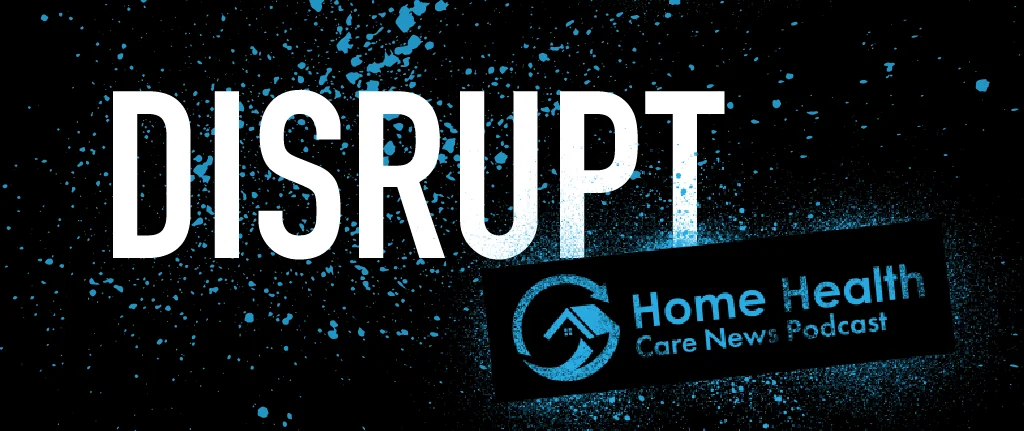Home care agencies have been trying to figure out how to partner with Medicare Advantage (MA) plans since the Centers for Medicare & Medicaid Services (CMS) announced the possibility back in 2018.
Anne Tumlinson, CEO of ATI Advisory, has the answers. She’s an expert on the economics of aging, a panelist at the upcoming Home Health Care News Virtual MA Summit and the latest guest on HHCN’s Disrupt podcast.
In our newest episode of Disrupt, Tumlinson breaks down the MA opportunities for home care providers by the numbers — from the number of plans offering in-home benefits to the financial considerations driving MA decisionmakers. Additionally, she briefs agencies on how the coronavirus is rocking the industry, what providers should say when pitching to plans and why home care’s future in MA is looking especially bright.
To hear that conversation and others, you can subscribe to Disrupt via Apple Podcasts, Google Play Music, SoundCloud or your favorite podcast app.
Tumlinson will dive even deeper into the financial considerations guiding MA decision makers at the Virtual MA Summit, which runs June 24 through 26. You can register here.
Until then, you can catch portions of HHCN’s conversation with Tumlinson below, edited for length and clarity.
HHCN: While many home care agencies want to work with MA plans, only a few are. In 2019, about 3% of MA plans offered in-home support services. Your team released some new data for 2020, pre-coronavirus, but what does that figure look like today?
Tumlinson: Today, there are 223 plans offering the new supplemental benefit in-home support services. That’s the category referring to in-home personal care services.
That is an increase over the previous year, which was only about 80. So the good news is we’re definitely seeing an increase from 2019, when these benefits could first be offered.
At the same time, this is also the first year plans could offer a whole new set of benefits much more focused on social-support needs. They’re called Special Supplemental Benefits for the Chronically Ill (SSBCI). It’s a category that lets plans offer benefits not related to health care at all — food, produce, meal, pest control, transportation, social-needs benefits.
Between the non-medical primarily health-related benefits and new non-medical services, we have 619 plans that are doing one and/or the other. That’s not a high percentage of the about 3,000 or 3,500 plans, but the fact that there are 619 plans doing this at all, to me, is like a small miracle.
Are all of those plans working with home care providers to offer those services?
It varies tremendously.
We’re definitely seeing the approach where somebody in the health plan has reached out specifically to a home care provider in their market — or two or three — to say: “Hey, we want to offer this benefit. Are you guys equipped to deliver it, and can we start to talk about what that relationship would look like?”
It might be a regional plan, like Geisinger or SCAN Health Plan. They want to work with regional local providers with whom they can build long-lasting relationships and can be collaborative to their approach to collecting data and information.
Another model we see [is from] some of the larger insurance companies like Humana (NYSE: HUM), Anthem (NYSE: ANTM) and WellCare (NYSE: WCG).
Some [larger plans] haven’t done anything, really. They just put these benefits in their benefit package, and they haven’t really built out a contracted network yet. It’s still a really immature set of relationships where there’s a lot of floundering around.
Model No. 3 is where there’s an intermediary that’s serving kind of like an aggregator. We have a relationship with a company called healthAlign. A couple health plans have contracted with them to essentially find all of the different home care providers and aggregate them in one platform to play the go-between role in terms of contracting and things like that.
That’s my favorite kind of model.
How has the coronavirus shaken up the MA industry?
It’s a little hard to say right now.
Many MA plans are in this very weird position where their costs are way down for medical care because doctors’ offices and everything else has been closed. They’re kind of sitting there with the pot of money they’re supposed to be spending that they haven’t been able to spend.
Secondly, they’ve been given this incredibly broad flexibility from CMS around these supplemental or non-medical benefits, which previously only a handful of them had been offering as formal benefits.
But now CMS is saying: “If you need to change that in the middle of the year, which is normally not allowed, [you can]. We get it. You did your benefit packages way back before anybody knew what COVID-19 was, and now you’ve got a bunch of people stuck at home, who need things like meals, groceries and in-home support services. We’re going to allow you health plans to make those changes in your benefit packages … so that you can meet your member needs and redirect the resources.”
But the third thing is there’s an enormous amount of uncertainty, so it’s really hard, especially for larger plans, from a financial standpoint, to say, “Let’s start buying in-home support services.”
They don’t know if three or four months from now there’s going to be this huge pent-up demand for all these elective procedures. So there’s some hesitation on their part to jump in with both feet and start paying for things that they haven’t been paying for before.
My opinion is given how long we expect this pandemic to dramatically affect our lives, it’s going to dramatically change the way that MA plans and health care, in general, are delivered — and these flexibilities will be more and more deployed.
It looks really good for home care right now. That is the bottom line.
I know there’s not a lot of data on those mid-year MA flexibilities, but this essentially means that MA plans could be adding new home care benefits right and left right now, right?
That’s right.
This all sounds really good for home care, but I don’t want to sound flippant because I know there are a lot of challenges to delivering home care as a result of the virus. But I think there will be a need.
What other recommendations would you have for providers looking to get involved with MA plans?
You’ve got to attack this in a variety of ways.
Look at the local health plans. Who in your market is a real leader at a community level? It could be a hospital, a health system, a physician group.
I always give the example of Geisinger or SCAN Health Plan. They’re a little bit less bureaucratic, and they’re a lot more focused on meeting the needs of [the] community.
Those are going to be the organizations that are more receptive to working with you. There’s fewer people to deal with, and you can find the decisionmakers and get in front of them.
If you’re part of a national organization, … think about, at your corporate level or at a regional level, what is going to be your strategy or your approach?
You’ve got power in numbers. You’ve got a quasi-network. How do you organize yourself in a way that gives you something to take to those conversations?
Finally, you have to have something to say about who you are when you make that approach, really making sure that you understand what is valuable to these health plans. “How can we as an agency be helpful in delivering [these services]?” And what are the benefits to you in offering them?
On the flip side, what are MA decisionmakers taking into account when they’re creating plans?
It’s a long process in deciding what’s going to go into a benefit package. We’re in June 2020, … and their [plan] decisions are all made for 2021.
In a month or two, if they haven’t already, [plans] are going to start thinking about what’s going to go into their packages for 2022.
How much extra money are they going to have under their bids and how are they going to divide that up? A lot of it goes into what other plans are doing in that market and how they can be competitive.
At the end of the day, what Medicare Advantage plans really want to do is be very, very competitive on enrollment. That’s No. 1. “How can we structure our benefit package to be attractive, both in terms of attracting new members and retaining current members?”
And then, “How can we do this in a way that doesn’t … increase spending in any way, shape or form above and beyond what we estimate it will?” They want to feel comfortable that they know what they’re doing when they price [supplemental benefits].
Finally, they care a lot about what we call coding — information that can help their care managers manage their population better. And then also, you know, what kind of information can help in the coding that they need to get paid well by CMS.
Finances are obviously an important part of the equation. We’ve heard from some providers working with MA plans that the payments they’re getting aren’t always great.
That’s exactly right.
[Imagine] for illustrative purposes every health plan getting $1,000 per member, per month.
Let’s just call that the benchmark right now. Then the plan says, “Hey, I think we can do this for $900 per member per month.”
CMS says: “That’s awesome. Of that difference of $100, you get to take $50 of it and do whatever you want with it.”
Not anything, but all that fun stuff that’s going to help you attract enrollees like lowering the cost of the plan premium, lowering out of pocket costs, offering supplemental benefits.
This is not a lot of money relative to the rest of the spend. Within that, they have to prioritize. This is very hypothetical right now, but there’s really a small amount of dollars available designated for the category that we’re talking about.
In many ways, this opportunity [for home care providers] is more strategic and symbolic than it is financially a big win.
The actuaries have to price the risk. They think, “Hey, how about if we pay $4 for every 15 minutes.” They don’t really know what they’re doing, so the rates are not great. Not always, but in many instances.
The last thing I’ll say about all this is that the policy environment is very fluid right now. This is an election year. We have a huge pandemic going on. Nursing homes are under fire. Medicare’s never been more flexible.
Going into next year maybe, there are going to be some proposals on the table to make the pot of money available for home care from public paying sources bigger because there’s a recognition that people really do need these services to stay home and to stay out of nursing homes.
Overall I’m hopeful that will go up. That’s why it’s so important to strategically position yourself with these payers now.




